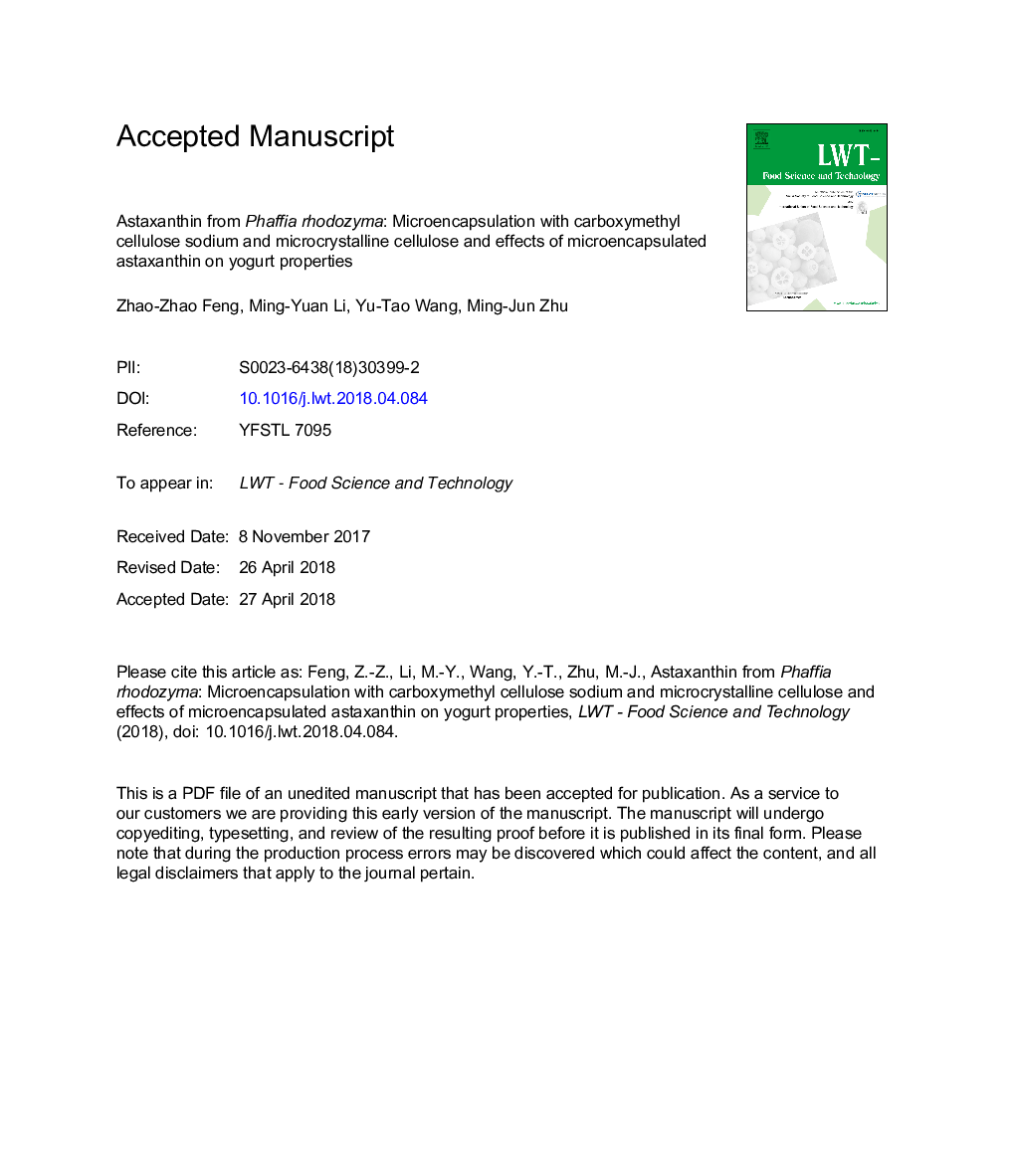| Article ID | Journal | Published Year | Pages | File Type |
|---|---|---|---|---|
| 8890372 | LWT - Food Science and Technology | 2018 | 34 Pages |
Abstract
In this study, the astaxanthin from Phaffia rhodozyma was encapsulated with carboxymethyl cellulose sodium (CMC-Na) and microcrystalline cellulose (MCC) by freeze-drying and used in yogurt. The encapsulation improved the stability, solubility, and antioxidation activity of the astaxanthin and increased the extent of its potential industrial application. The encapsulated efficiency and solubility of the microencapsulated astaxanthin were 58.76% and 52.88%, respectively. In comparison with non-encapsulated astaxanthin, the microencapsulation did prevent the astaxanthin from dramatic degradation, with an astaxanthin retention value of 80.86% in the microencapsulated astaxanthin at 55â¯Â°C in 16â¯h. Non-encapsulated astaxanthin was much more stable in acid than in neutral phase, but the microencapsulated astaxanthin showed no significant difference in stability under both conditions. The astaxanthin yogurt showed an attractive orange-red color as well as a significantly higher DPPH-scavenging activity and stability than the plain yogurt.
Keywords
Related Topics
Life Sciences
Agricultural and Biological Sciences
Food Science
Authors
Zhao-Zhao Feng, Ming-Yuan Li, Yu-Tao Wang, Ming-Jun Zhu,
